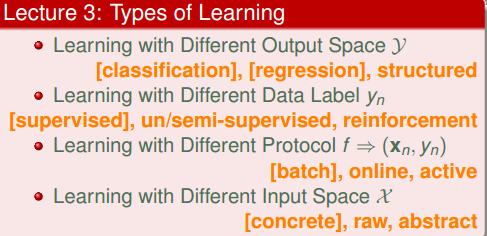1. ML的基本分类:
1.1 不同的(y)类型:
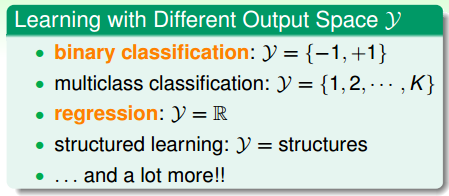
- 二元分类:
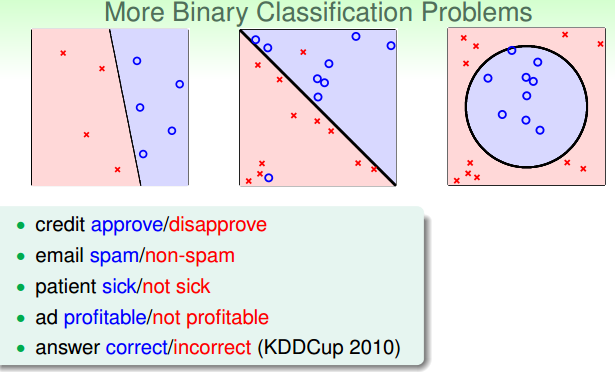
- 多元分类:
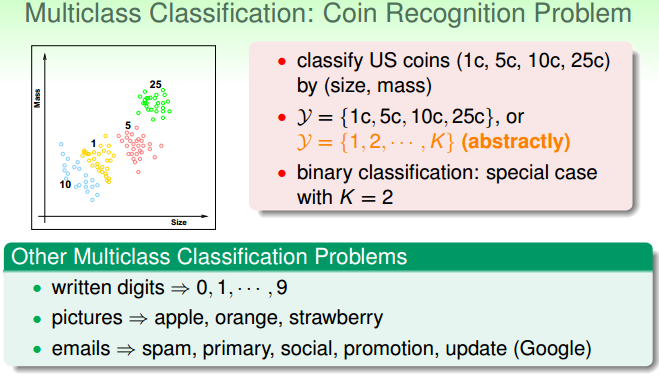
- 回归:
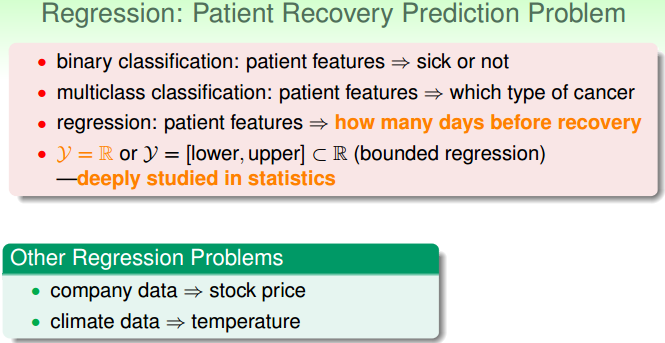
- 结构学习:

1.2 是否有(y):

-
有监督(supervised):
Coin Recognition:every (x_n) comes with corresponding (y_n)

-
无监督(unsupervised):
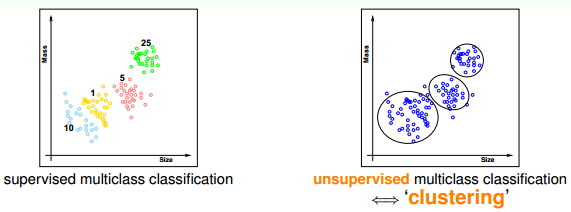

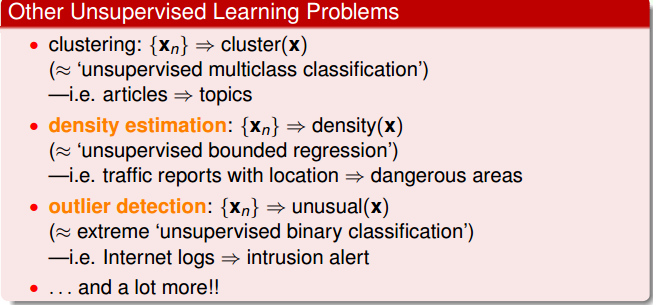
-
半监督(semi-supervised):
Semi-supervised: Coin Recognition with Some yn


-
强化学习(reinforcement):
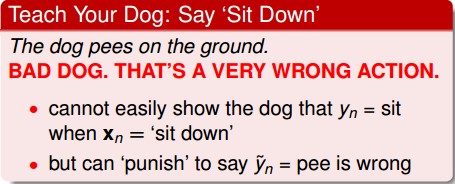
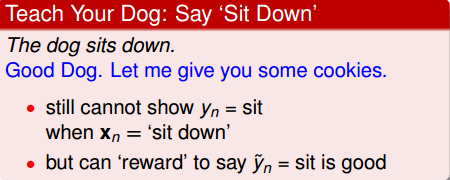

1.3 不同的学习策略(用户和机器的交互方式):
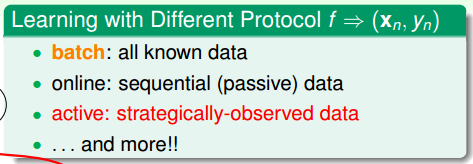
-
批处理(batch learning):
batch supervised multiclass classification: learn from all known data

-
在线学习(online learning):
尤其适用于结合流式计算,即数据是逐个产生,串行输入,无法batch

【注】:
- 联想PLA的最简单实现版本,就是online-learning:每次发现一个点犯错,就立刻修改(w),知错就改
- reinforcement learning is often done online :因为需要逐步修正model
- online hypothesis ‘improves’ through receiving data instances sequentially
- Active(主动学习):
improve hypothesis with fewer labels (hopefully) by asking questions strategically
1.4 不同的输入空间(mathcal{X}):

-
concrete faeture:
concrete features: each dimension of (X ⊆ R^d) represents 'sophisticated' physical meaning

-
Raw Features:
such as Digit Recognition Problem,raw input space like this,

- Other Problems with Raw Features: image pixels, speech signal, etc.
- raw features: often need human or machines to convert to concrete ones.

- Abstract Features:
abstract: again need ‘feature conversion/extraction/construction’
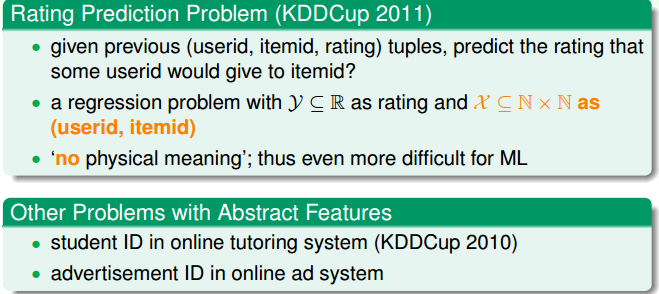
2. 总结:
